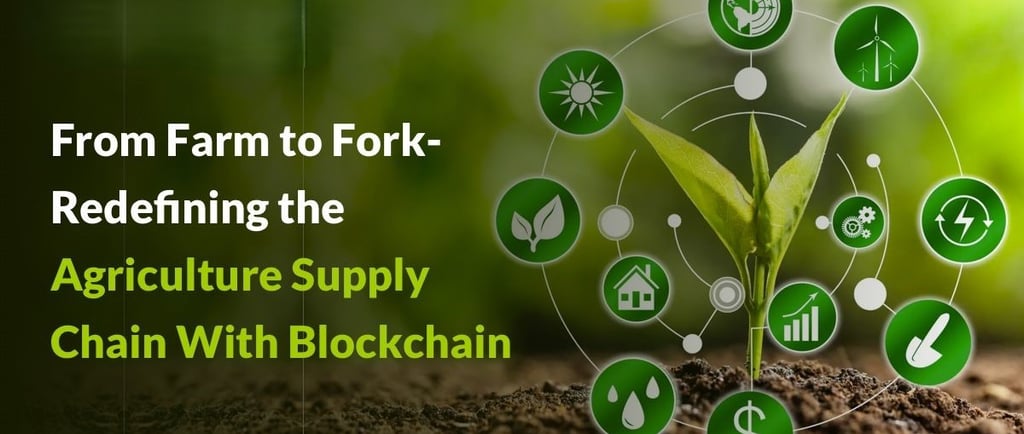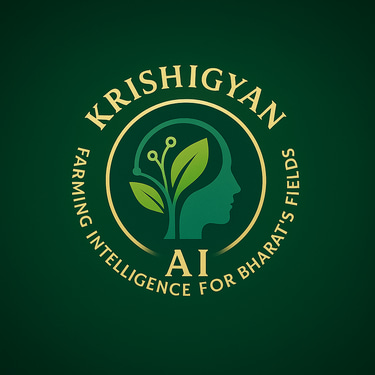Blockchain in Agriculture: Enhancing Traceability in the Indian Market
Building Trust, Transparency, and Value from Farm to Fork In a country as vast and diverse as India, where over 85% of farmers are smallholders, the journey of food from farm to table is often long, opaque, and fragmented. Consumers are increasingly demanding to know where their food comes from, whether it’s safe, and how it was produced. At the same time, farmers and agri-entrepreneurs seek fairer prices and better access to markets. Enter blockchain technology—a digital innovation that promises to revolutionize Indian agriculture by enhancing traceability, improving supply chain transparency, and unlocking greater trust among stakeholders.
HawkEye
5/16/20252 min read


What is Blockchain in Agriculture?
Blockchain is a decentralized digital ledger that records transactions securely and transparently. In agriculture, it allows every stakeholder—farmers, processors, exporters, retailers, and consumers—to record, verify, and trace the journey of agricultural produce in real-time.
Each entry on a blockchain is:
Time-stamped
Tamper-proof
Verifiable by all parties
This makes it ideal for tackling issues like food fraud, quality degradation, middlemen exploitation, and export rejections.
Why Does Traceability Matter in Indian Agriculture?
India faces several traceability challenges:
Use of unregulated pesticides and fertilizers
Food safety concerns (especially in exports of tea, spices, and organic produce)
Lack of standardized grading and pricing
Middlemen-driven markets with poor transparency
Increasing consumer demand for organic and ethically-sourced food
Traceability ensures that produce can be tracked back to its source, along with details like:
Farmer identity
Seed type and origin
Cultivation practices
Harvest and storage timelines
Transportation history
This creates a "digital passport" for every product, boosting confidence and enabling premium pricing.
1. Farm-to-Fork Transparency
Blockchain enables consumers to scan a QR code and instantly see where, how, and when the food was grown. This is particularly valuable for:
Organic produce
GI-tagged crops (e.g., Darjeeling tea, Basmati rice)
Fresh exports (fruits, spices, seafood)
2. Supply Chain Efficiency
By connecting all participants to a shared digital ledger, blockchain reduces:
Delays in transport
Data silos
Miscommunication between actors
It can also automate payments when predefined conditions are met (via smart contracts), reducing disputes and delays.
3. Food Safety and Compliance
Traceable records help quickly identify contamination sources in case of food safety issues. For exporters, it ensures compliance with:
EU traceability standards
Codex guidelines
Organic certifications
4. Empowering Small Farmers
Blockchain platforms can allow farmers to:
Prove their crop origin and quality
Access better pricing based on transparency
Build digital creditworthiness for loans or insurance
Real-World Use Cases in India
NABARD & Agri10x: Piloted blockchain-based agri-trade platforms for smallholders.
APEDA (Agricultural and Processed Food Products Export Development Authority): Exploring blockchain for export traceability.
Integration with Other Agri Innovations, Blockchain becomes even more powerful when combined with:
AI-powered climate advisories: Verifiable records of inputs and practices
IoT sensors: Real-time data on soil, storage, and transport
Drone-based imaging: Satellite verification of crop health
Carbon farming and certification: Proof of sustainable practices for earning green credits
Conclusion
Blockchain is more than a buzzword—it’s a breakthrough solution for creating trust in India’s agri-value chain. In an era of conscious consumption and rising export standards, traceability isn’t a luxury, it’s a necessity.
#BlockchainInAgri #Traceability #AgriTechIndia #SupplyChainTransparency #SmartFarming #DigitalAgriculture #FarmToFork
